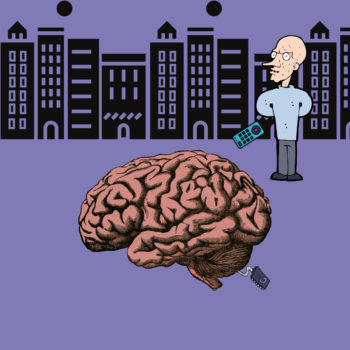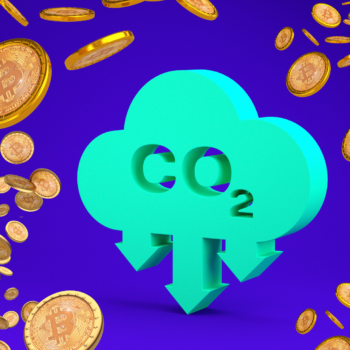Since its rollout, 5G has been a source of excitement and (somewhat) controversy. Governmental bodies like the CDC and EPA claim it’s safe, some scientists say it is detrimental to our health and environment. We decided to break through the corporate bias. Is 5G bad for the environment?
Busy? Try the speed read.
The short answer: 5G is bad for the environment. Or at least it’s not good for it.The rollout of the 5G cellular network requires A LOT of energy and infrastructure. In the United States, much of that energy comes from natural gas and fossil fuels. Higher (and more frequent) demand for energy = more gas & oil = tougher environmental challenges.
What we know: 5G emits high-frequency (millimeter waves) between 30Ghz and 300Ghz. That requires antennas to be in close proximity. Due to the lack of far-reaching signals, 5G will not replace 4G LTE completely. 5G, for now at least, will serve as a complementary tool to its predecessor. This means more radiation in the air and atmosphere.
Big picture: 5G requires exponentially more towers and more energy than 4G in order to function properly. This means more radiation, that we don’t understand the long-term consequences of, and more gas and oil consumption, which we do understand the consequences of.
Why it matters: Determining whether 5g is bad for the environment boils down to four words: personal health + environmental impact. Research varies widely on the subject from A-Okay to Doomsday.
Some experts point out how 5G EMF radiation is non-iodizing, meaning it does not carry enough energy to iodize atoms or molecules. However, the International Agency for Research on Cancer recently stated there is still a potential risk to humans for this kind of exposure.
While it is uncertain how severely 5G radiation impacts health, we know it has an effect. Just look up the About>Legal>RF Exposure disclaimer on your iPhone. Plus, we know many natural resources are needed to power this close-proximity network. We should be hesitant to make our homes, businesses and cities ‘smart’ at the cost of environmentally-invasive infrastructure.
If you are concerned about 5G exposure, consider the following steps:
- Protect yourself by limiting exposure to 5G-enabled devices when possible.
- Sign a petition to delay the deployment of the 5G wireless network until institutions understand and enact regulations in accordance with the potential health hazards and environmental impact (link at the bottom of the article)
Dig deeper → 7 min
TL;DR
Short answer: 5G is bad for the environment. Or at least it’s not good for it.The rollout of the 5G cellular network requires A LOT of energy and infrastructure. In the United States, much of that energy comes from natural gas and fossil fuels. Higher (and more frequent) demand for energy = more gas & oil = tougher environmental challenges.
Though it’s existed for some time, 5g technology requires more research and historical data to make rigid assertions about its health impact. One interesting development? 5G radiation can impact the behavior of insects like the honeybee.
Five Fast Facts
- 5G emits high-frequency (millimeter wave) between 30Ghz and 300Ghz, so antennas must be in closer proximity to each other to provide clear reception.
- Over 215 scientists from 40 different countries appealed to the United Nations for urgent action to reduce the EMF (electromagnetic field) exposure emitting from wireless sources.
- Low-intensity, extremely high electromagnetic radiation can impact insect behavior, notably the honeybee.
- U.S. telecoms currently use around 31 million megawatt-hours of electricity annually – 5G is estimated to consume up to three times the energy it takes to power LTE networks.
- 5G is a battery vampire.
Exploring the Environmental impact of 5G: What We Know
Since it was introduced, 5G has aroused excitement, curiosity, and caution. With varying claims on its impact on our health and the environment, what should we believe?
There is so much conflicting research and perceptions around 5G it was almost hard to write this article and collect accurate data points. From my research, it seems like people either think there is nothing wrong with 5G at all, or that it is going to kill us all.
Like most things in life, the answer is probably somewhere in the middle.
We know a lot about technology, and what it does. However, we don’t know much about its long-term impact. That is mostly because it hasn’t been around for more than a few years.
Is 5G bad for the environment?
Breaking down the science behind 5G
5G emits high-frequency (millimeter waves) between 30Ghz and 300Ghz, so antennas need to be in closer proximity to each other to provide clear reception. U.S. telecoms and data centers will need to use more energy to power our devices with this new technology.
Due to the lack of far-reaching signals, 5G will not replace 4G LTE completely. 5G, for now at least, will serve as a complementary innovation to its predecessor.
Thus, we need significant amounts of energy to fuel both technologies. This means more radiation in the air and atmosphere. That sounds like a bad thing, so why does it exist?
Because it is great for the economy, stupid! OK, I’m being cynical here. Still, most new technologies exist because it makes our lives more convenient in the short-term. That holds true regardless of potential setbacks in the long-term. For 5G, the problem lies in our lack of understanding about the potential harms of new radiation.
The good news — recent studies show that human skin deflects more than half of the radiation emitted from 5G. Yes, this is good. But I’m not ready to throw up 1,000 5G towers in my home state. I’m no scientist, but history is not kind to new or popular trends that may or may not be harmful.
A history of blanket-good-PR for new innovations
Just ask nuclear plant workers from the 1960s what authorities told them about exposure or watch a Big Tobacco commercial from 1950. Some experts point to the fact that 5G EMF radiation is non-ionizing, meaning it does not carry enough energy to iodize atoms or molecules.
However, the International Agency for Research on Cancer recently stated there is still a potential risk to humans for this kind of exposure.
Radiation isn’t inherently bad
The mere existence of radiation is not enough to chalk something up as carcinogenic or dangerous. 5G emits radiation, but so do bananas. And that radiation is non-iodized, which we just mentioned means it is not powerful enough to impact our molecules.
Apparently a routine dental x-ray is the equivalent of 100 bananas. Who knew? To evaluate its potential harm, it really comes down to how close do you live to 5G towers and how often are you interacting with 5G-enabled devices.
EMF (electromagnetic frequency) levels are deemed safe by authorities such as the CDC and EPA, but it doesn’t make it any more natural or agreeable with our biological parts. If I were in charge of the world, I’d roll out 5G slowly and with caution.
But the global economic race to the top is a zero-sum game, so no superpower (echem, U.S. and China) can afford to play chicken with the other. By afford, I mean, win the world superpower race of course. So, self-serving countries want 5g for its economic benefit. But is 5G bad for the environment?
Environmental Impact of 5G
Is 5G bad for the environment?
About a year ago, I learned about the impacts of streaming through the BBC’s short doc Dirt Streaming. It highlighted the huge energy output required of data centers to keep up with the demand for ubiquitous technology like streaming.
This was before the pandemic seemed imminent. Now, with billions of people stuck at home, more humans are using these streaming services than ever before. These spikes in energy demands are putting pressure on servers operating at maximum capacity. Netflix was pressured by the EU last year to use SD rather than HD for content to keep up with the demand and avoid ‘breaking the internet’.
Now add in 5g. How will it make streaming more energy efficient? It won’t.
5G emits an extremely high frequency (millimeter wave) which lies between 30Ghz to 300Ghz. Because it is so high-frequency, antennas must be in closer proximity to each other to provide clear 5G reception.
This means a lot more antennas than 5G. Like exponentially more. The towers are about the quarter of the size of standard 3 or 4G cell towers, and many point to this as a reason why it’s not so bad. That’s like saying the construction of 50,000 3-story buildings is less harmful to the environment than 1,000 30-story skyscrapers. Not sure if I get the logic there.
5G will certainly have an impact on deforestation. This will inevitably affect insect populations and other environmental factors.
Key Takeaways
5G is here. How will this massive output of data change the world?
- 5G is the future. We are going to see blazing fast internet speeds on our mobile devices. The improvement in connectivity is indeed going to improve our lives, but there may be consequences.
- This advanced, but untested technology is fast approaching. There is very little that we can do to stop its widespread implementation. One thing that we all should do is understand EMF better and protect ourselves through the proper choice of products.
- Try limiting your EMF exposure by keeping phones and smart devices a few feet away from your body whenever possible (like keeping it in a bag instead of your pocket). If you can, take regular breaks from 5G phones and devices. You can also attach Ethernet cables around your house using a splitter and turn your Wi-Fi off. Or, make use of radiation detectors to know whether you’re near high levels of EMF.
- You can also sign a petition to halt the local deployment of 5G wireless networks until we prepare a proper framework of guidelines that consider health hazards and environmental effects. Before we make our homes, businesses, and cities ‘smart’, it’s important to make careful, ‘smart’ decisions. Especially when adopting new technologies.
The science behind 5G impact remains unclear
Many scientists have conducted EMF studies and published their results in peer-reviewed journals. These studies show how adverse biological and health effects are caused by EMF sources developed by humans. Here’s one report from the EU.
In a letter written by Dr. Martin Pall, a biochemistry professor at the Washington State University, Pall discusses the severe biological and health effects resulting from 5G. The letter states that current FCC guidelines are inadequate and obsolete, and favor the telecommunications industry above health concerns.
Pall has major concerns about the long-term impact of a mass 5G rollout. This includes potential side effects like blindness, hearing loss, skin cancers, male infertility, and thyroid issues. Disclaimer*** some people think this guy’s a total crackpot, despite his credentials. Personally, I try to look at the data behind the claims before judging someone’s character, and you can’t outright call him crazy.
Surprisingly, the FCC perspective on 5G is different. The bureaucratic arm wants the technology deployed as early as possible. Instead of laying out strong and effective guidelines, the agency’s efforts are towards developing a legislature that will prevent local governments from restricting the implementation of 5G.
Building a 5G future with caution
Apart from 5G specific studies, other studies show evidence of harmful effects of low-intensity, extremely high electromagnetic radiation on animals.
5G is the future. Yes, we are going to see blazing fast internet speeds on our mobile devices. The improvement in connectivity is indeed going to improve our lives, but we’d be foolish to ignore the potential consequences.
This advanced, but untested technology is fast approaching, and there is very little that we can do to stop its widespread implementation. However, one thing that we all should do is understand EMFs better and protect ourselves through the proper choice of products. Determining whether 5G is bad for the environment should also be equally considered.
Try limiting your EMF exposure by keeping your phones and smart devices off your body whenever possible. If you can, take regular breaks from 5G phones and devices, or make use of radiation detectors to know whether you’re near the high levels of EMFs.
You can also sign a petition to halt the deployment of the 5G wireless network until a proper framework and guidelines considering health hazards and environmental effects are prepared.
Before we make our homes, businesses, and cities ‘smart’, it’s important to make ‘smart’ decisions when adopting the new technology. Only then can we make a serious consideration over whether 5G is bad for the environment, and make an informed decision rather than a knee-jerk reaction.













No Comments